Elias Hatfield Indictment for Unlawful Retailing (1889)
22 Monday Feb 2021
Posted in Hatfield-McCoy Feud, Logan
22 Monday Feb 2021
Posted in Hatfield-McCoy Feud, Logan
04 Wednesday Mar 2020
Posted in Hatfield-McCoy Feud
Tags
Ambrose Mullins, Appalachia, feud, feuds, Hatfield-McCoy Feud, history, Levisa Hatfield, Logan County, Mingo County, moonshine, moonshining, Vicy Hatfield, West Virginia

Levisa “Vicy” Hatfield indictment for selling spirituous liquors based upon information by Ambrose Mullins, Logan County, WV, 1882.
20 Wednesday Mar 2019
Posted in Big Harts Creek, Logan, Whirlwind
Tags
Amanda Mullins, Appalachia, Bluefield, Buck Fork, C.H. McCloud, Charlie Mullins, Cherry Tree, genealogy, Harts Creek, history, James Baisden, John Jackson, Logan, Logan Banner, Logan County, moonshining, Ohio, Randy Baisden, revenue agents, S.W. Dalton, Trace Fork, Troy Vance, Weltha Mullins, West Virginia, Whirlwind
A correspondent named “Blue Belle” from Whirlwind on Harts Creek in Logan County, West Virginia, offered the following items, which the Logan Banner printed on January 12, 1923:
The roads are rocky but they won’t be rocky long.
Troy Vance has returned from Ohio. He reported a nice time.
The Revenue Officers sure are raiding Harts Creek.
C.H. McCloud said that he was going to run a baggage truck from Logan to Harts Creek. $2.50 will be the charge.
I saw Charlie Mullins going to Trace Fork Sunday. He said goodbye to the Buck Fork girls.
Wonder who it was that was visiting the widow last Saturday night?
Mr. Randy Baisden has forsaken the Whirlwind girls and has gone to Cherry Tree.
John Jackson and Weltha Mullins and Amanda Mullins were seen going through Mullins town some time ago. The girls sure were hanging to Johnnie.
James Baisden and S.W. Dalton have just returned from Bluefield and both reported a good time.
17 Monday Sep 2018
Posted in Civil War, Hatfield-McCoy Feud, Native American History, Timber
Tags
Appalachia, Battle of Middle Creek, Brandon Kirk, Breaks, Breaks Canyon, Breaks Interstate Park, civil war, fossils, Hatfield-McCoy Feud, history, James A Garfield, Kentucky, Marion, moonshine, moonshining, Native American History, Native Americans, photos, Phyllis Kirk, rafting, Saltville, Union Army, Virginia

Video showcasing regional history. 25 August 2018.

Hammerstone and Polishing Stone. 25 August 2018.

Fully Grooved Axe. 25 August 2018.

Lt. James A. Garfield, Union hero at the Battle of Middle Creek, KY. 25 August 2018.
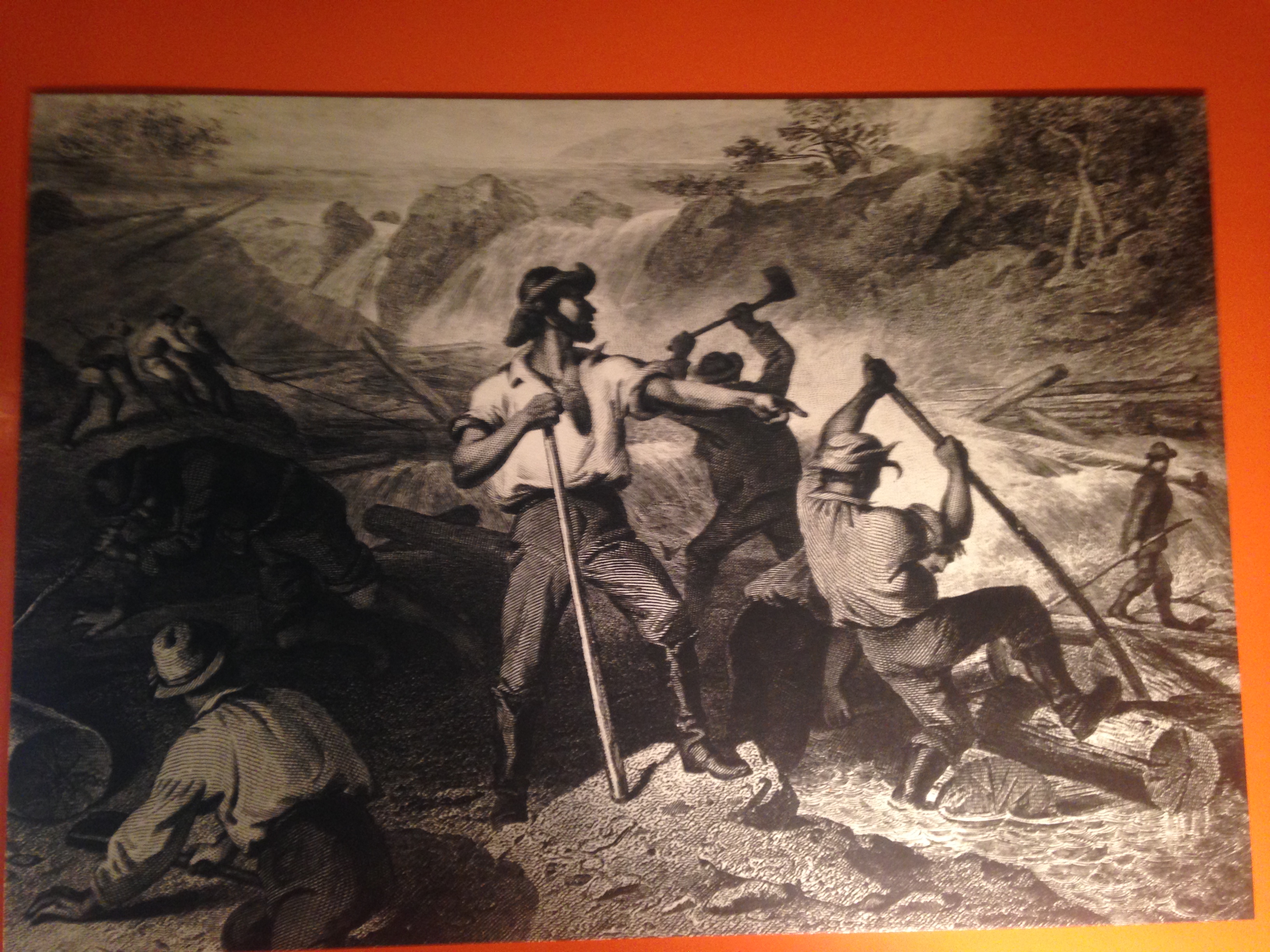
Rafting through Breaks Canyon, c.1885. 25 August 2018.
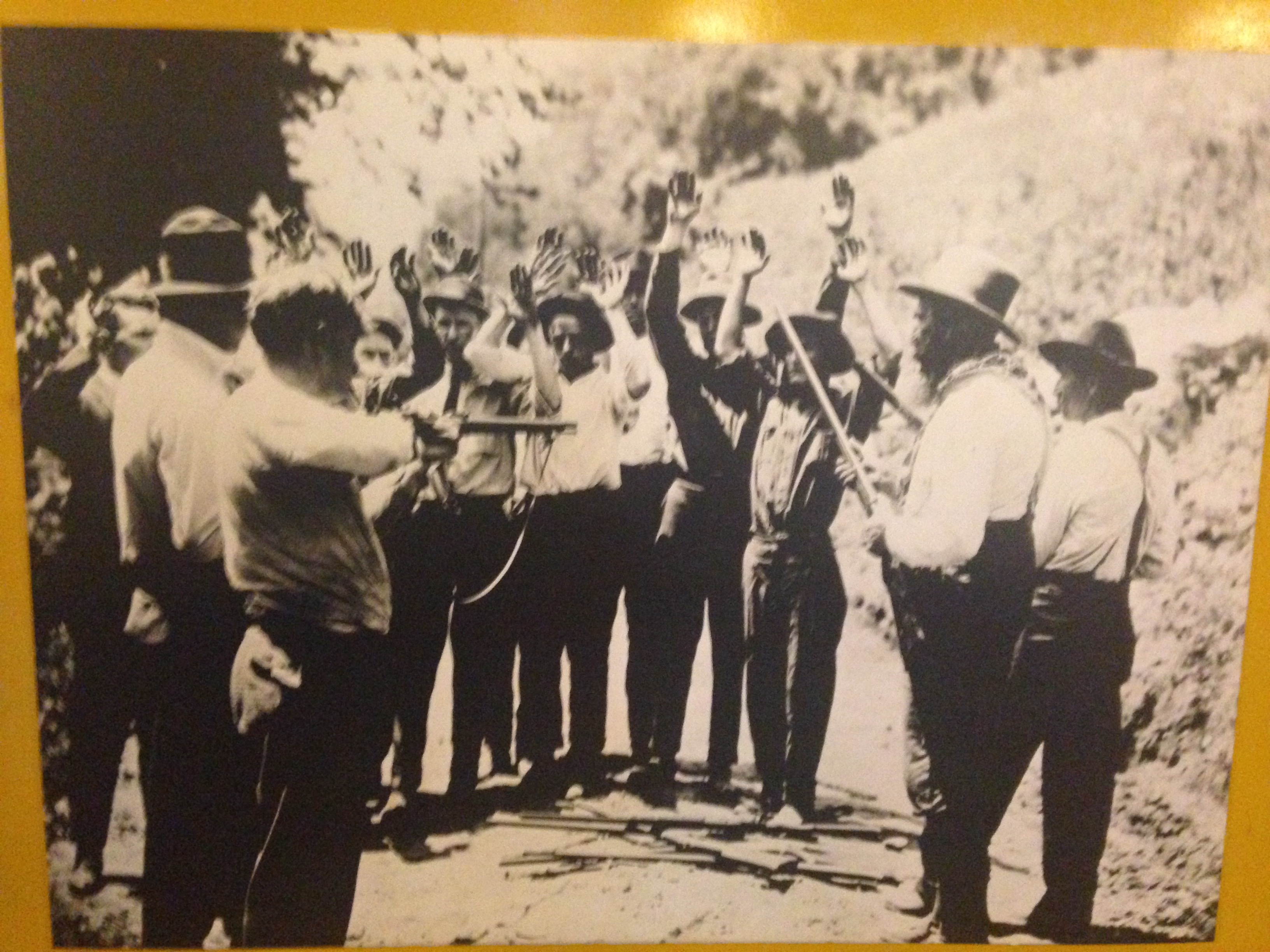
This photo is labeled: “A Confrontation Between the Hatfields and the McCoys.”
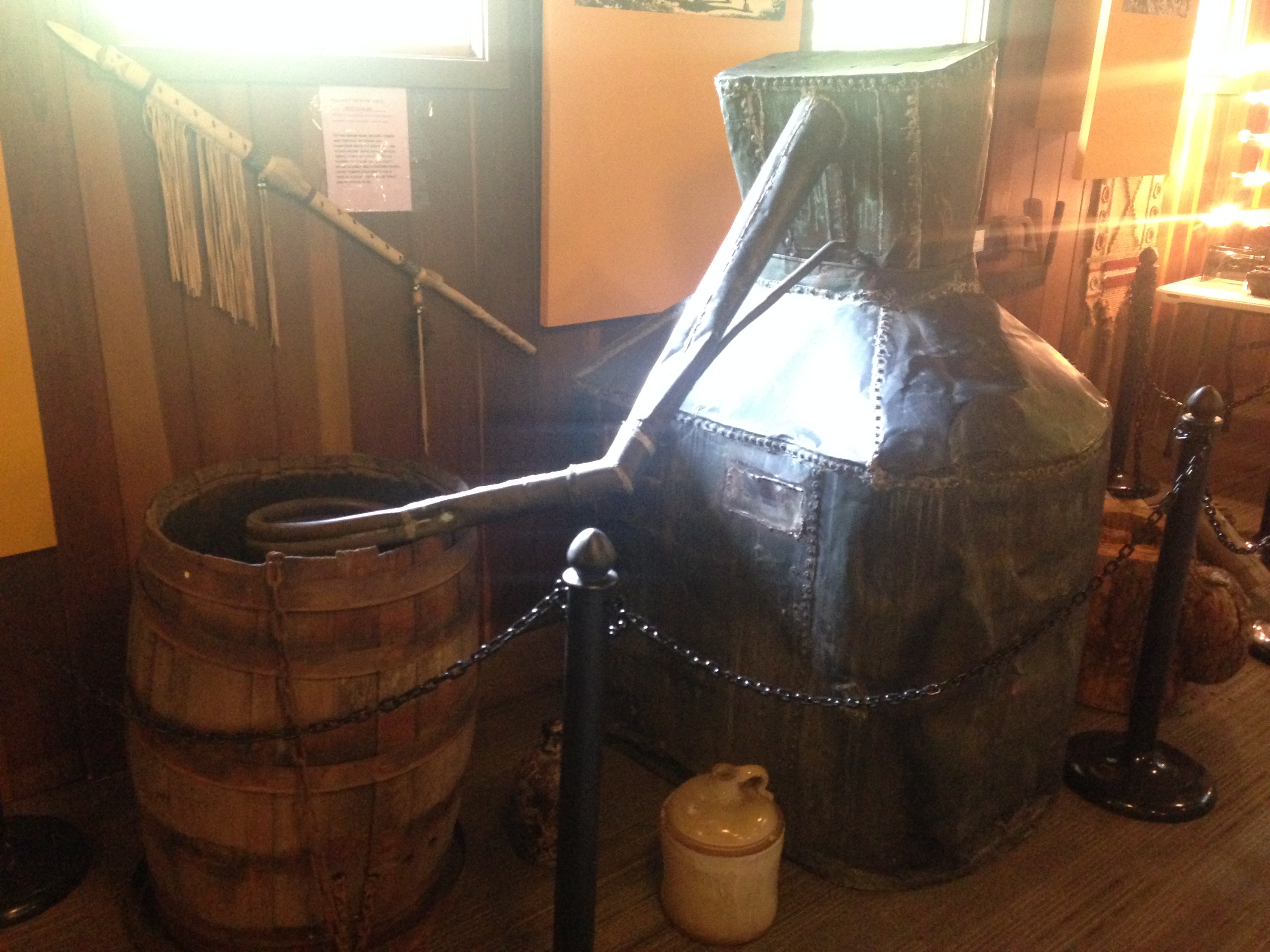
Moonshine still. 25 August 2018.

Seed fern fossil, 305 million years old. 25 August 2018.

Native wildlife. 25 August 2018.

Log cabin. 25 August 2018.
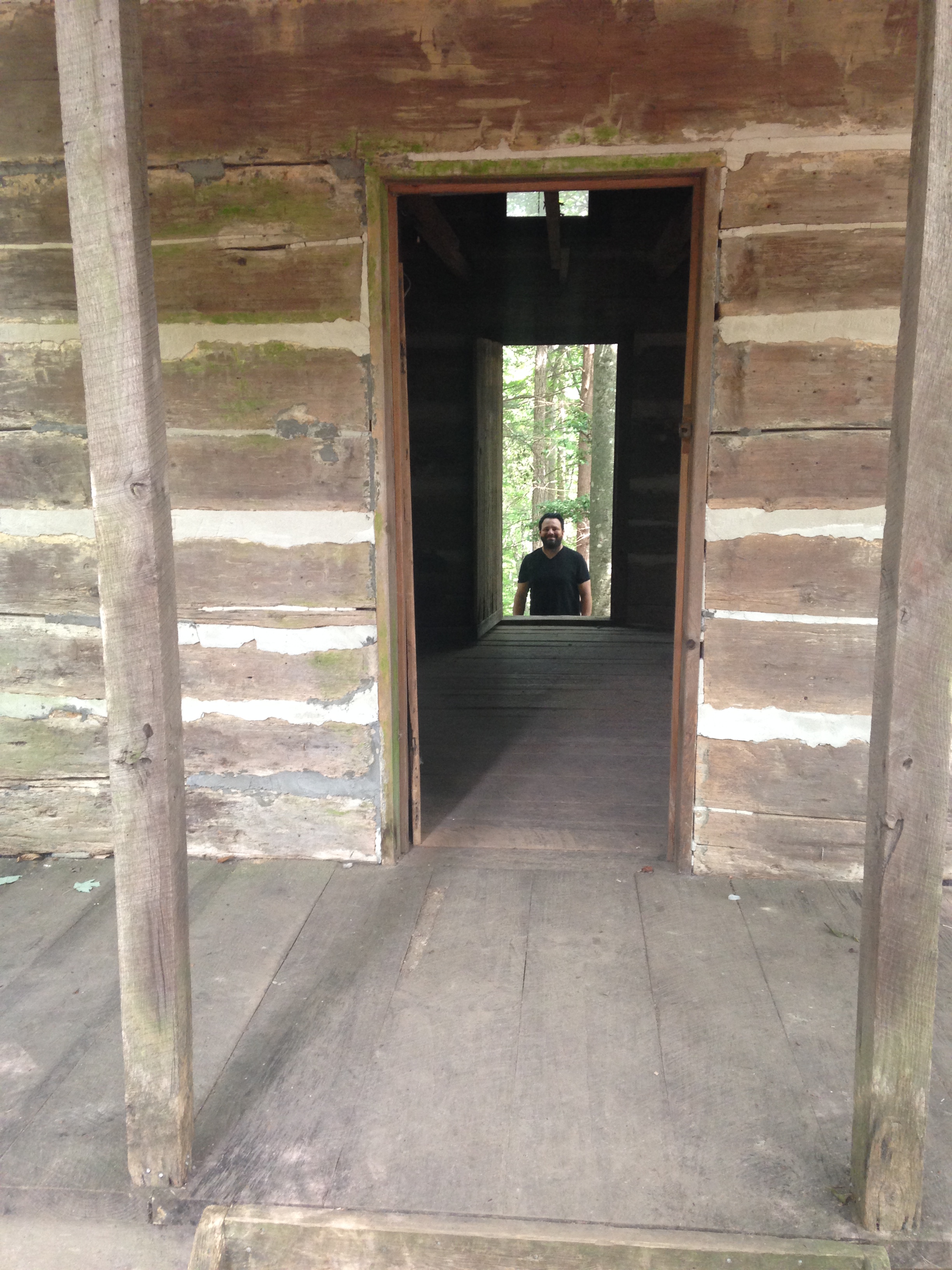
Log cabin. 25 August 2018.
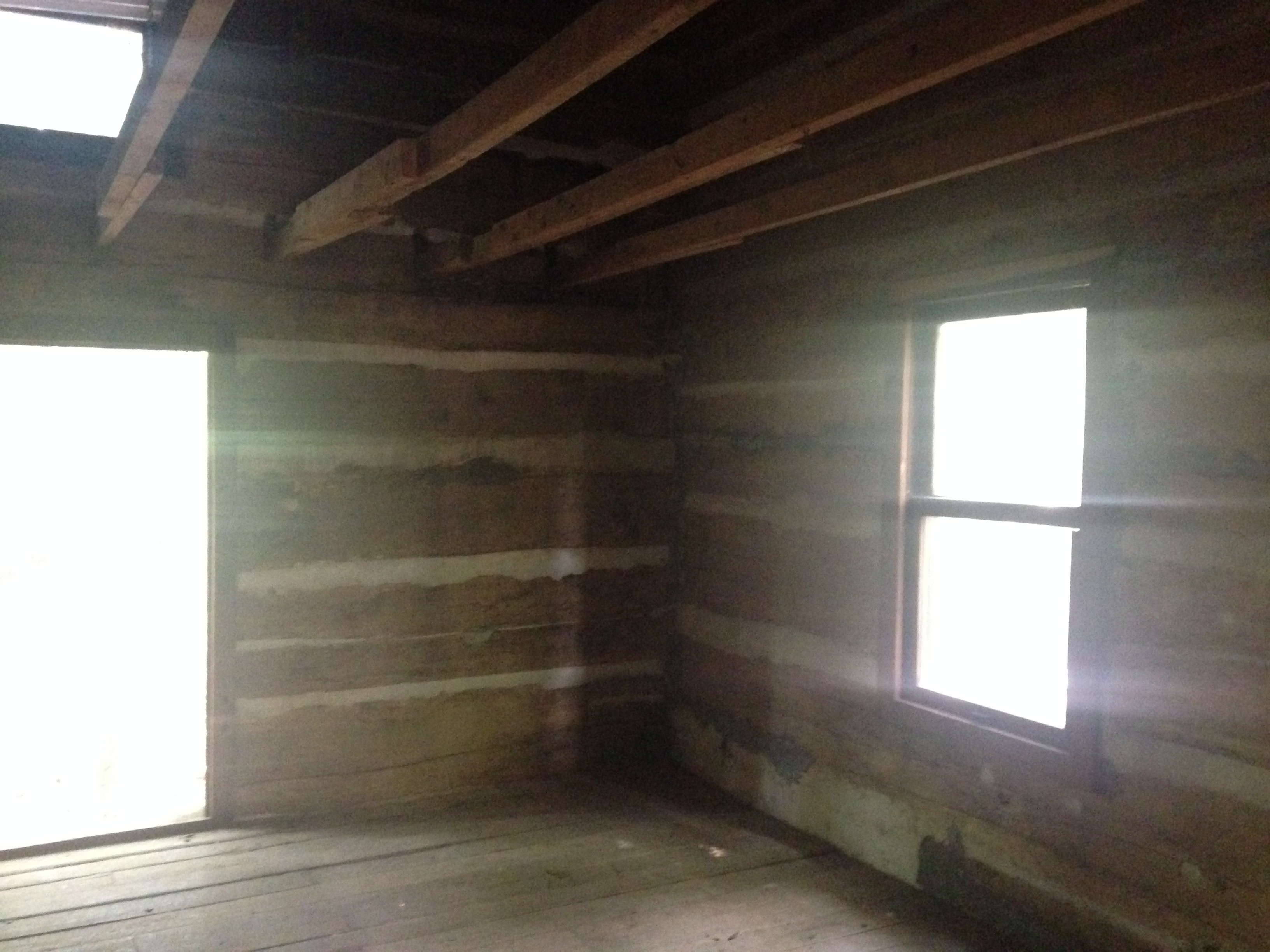
Log cabin. 25 August 2018.

Log cabin. 25 August 2018.
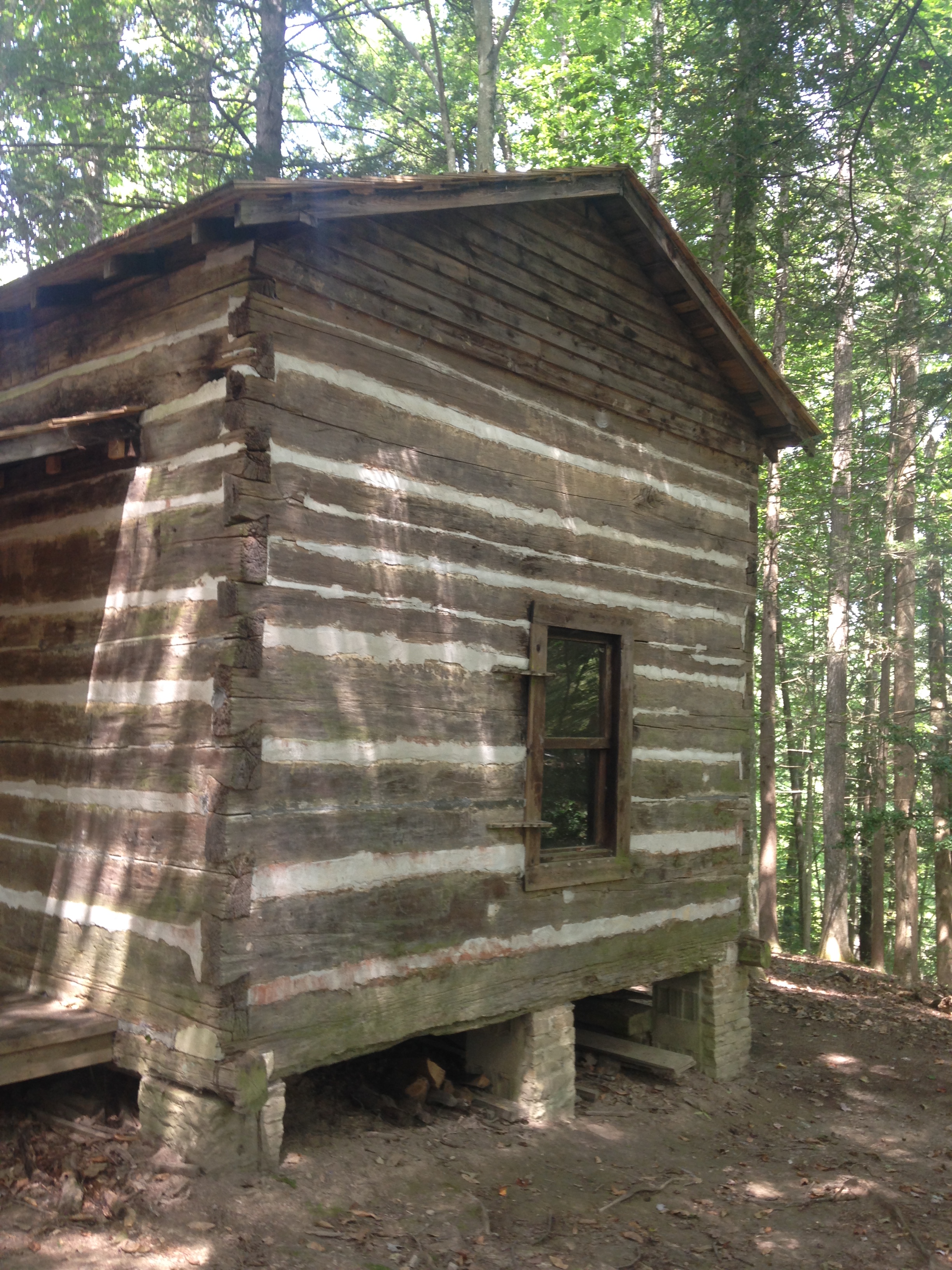
Log cabin. 25 August 2018.

Mom at the cabin. 25 August 2018.

Moonshine still showing cap, thumping keg, and worm. 25 August 2018.

Salt kettle cast at Marion, VA, about 1860 and buried to conceal it from Union troops at Saltville, VA, in 1864. 25 August 2018.
03 Monday Sep 2018
Posted in Battle of Blair Mountain, Coal, Italian American History, Logan, Man
Tags
Alva Grimmett, Appalachia, Barnabus, Blair Mountain, Bruno, Buffalo Creek, Cabin Creek, Campbell's Creek, carpenter, Charleston, Christian, coal, Democratic Party, deputy sheriff, Don Chafin, drum runner, Ed Goodman, Emmett Scaggs, George McClintock, Great Depression, Hatfield Bottom, Henderson Grimmett, history, Joe Hatfield, John Chafin, Kanawha County, Kistler, Landsville, Logan County, Mallory, Mallory Coal Company, Matilda Hatfield, McKinley Grimmett, moonshining, Nancy Grimmett, prosecuting attorney, Republican Party, Sand Lick, sheriff, Superintendent of Schools, Tennis Hatfield, Thomas Hatfield, United Mine Workers of America, West Virginia, Wild Goose Saloon
McKinley Grimmett was born on November 30, 1896 to Henderson and Nancy (Hatfield) Grimmett at Sand Lick, Logan County, WV. On May 14, 1916, Mr. Grimmett married a Ms. Plymale, who soon died, in Logan County. One child named Alva died on June 21, 1919 of whooping cough, aged fourteen months. His World War I draft registration card dated September 12, 1918 identifies him as having blue eyes and light-colored hair. He was employed by Mallory Coal Company at Mallory, WV. On November 13, 1919, he married Matilda “Tilda” Hatfield, daughter of Thomas Hatfield, in Logan County. He identified himself as a farmer in both of his marriage records. During the 1920s, he served as a deputy under Sheriff Tennis Hatfield.
The following interview of Mr. Grimmett was conducted at his home on July 17, 1984. In this part of the interview, he recalls his occupations. Coal, Don Chafin, Tennis Hatfield, unionization, and the Great Depression are featured.
***
Did you ever go to work in the mines?
Oh yeah. I’ve been… That’s what I done over here for 44 years and two months, in and around the mines.
Who hired you?
Yeah, a fellow by the name of Frazier down here at Logan. Superintendent. Not at Logan. Landsville. I stayed there four years, pretty nigh of five years. Then I quit down there and I come to Christian and I stayed up here. A fellow by the name of Harry Venebale hired me over here, the superintendent. And I stayed with him 34 years. Wouldn’t let nobody else hold a lever but me. Drum runner. I’d run as high as 35 railroad cars a day off of that hill. I’ve done it many a day.
Did you do other jobs?
Oh yeah. Days the mines didn’t work I was the carpenter boss. That is, I was overseer over ‘em all. After the union come in, why I wouldn’t take it as a boss. They just run me as a leader, you know. At that time, I’d either have to go in as a boss or get off the union, you know. And I knowed the union was the best for me and I stayed with the union.
Did you have any role in organizing the union?
Oh yeah. I had a big… They wouldn’t let us organize on their property. We had to go across an island over there in the river and have our meeting to organize.
Is it true that local men had the union organized and were waiting for Washington to allow it?
Yeah, that’s about right. We got it. No, they come from Cabin Creek and Kanawha County and Campbell’s Creek over there and tried to organize us. Don Chafin was the high sheriff. He got so much ton per coal and everything. And we couldn’t do a thing because he had every child, woman, and everything else on his side to block us every way. They come to Blair Mountain and had fights. Killed several people, too. Both sides. But I never was in it. I was running a drum and they never did ask me to go. But they paid ‘em. They did go from over there. And went from around here, too. To fight against them, you know. And there was several of them got killed up Dingess Run there. I’ve been at the place where one fellow, sink hole he was in. There was four of them got killed: deputy sheriffs. George Gore and a fellow by the name of Mitchem. I don’t know the other two. I’ve forgot ‘em now. George Gore and Mitchem. But I know where they was at and everything there.
Can you describe Don Chafin?
I’m not too familiar with him now. But he controlled Logan County all the time. Whatever he said, why they had to do or they’d get around you and beat you to death or something like that, throw you in the river, tie your hands behind you – stuff like that.
Were you a Chafin deputy?
I worked for Tennis Hatfield and Joe.
How did Tennis hire you?
Well, Emmett Scaggs run against him. And the County Court was Democratic and they give it all to Emmett. Tennis carried it up to the high court and he won it. About that time, that’s when it was, 1922 I believe it was, last part of 1922, well Emmett, he was a well-educated fellow, he had been the superintendent of schools and everything, he turns around and registers and turned to be a Republican, well then they appointed him prosecuting attorney. You understand? Give him a job. Now the Democrats didn’t do that—Tennis and all of them did. It made a full change around whenever Tennis was elected. The County Court had been Democratic all the time and it turned over, changed hands, and make a Republican County Court. Just like they’ve got now, it’s all Democratic. And a Republican couldn’t get nothing. I’ve seen John Chafin and Hi beat an Italian man. He had two ducks carrying them. Had to wade the river. They fired him over there at Christian. Had to ride horses that day and time. Didn’t have no cars. And they jumped off their horses after they overtook him and they beat him until he couldn’t walk. My dad had a store down at the mouth of the creek and he went and got him and got him up to the store and his ducks got loose. And Mother got the ducks and she raised all kinds of ducks from ‘em. But I haven’t seen that man from that day to this. He’s dead now. But they liked to beat him to death. Now Henry Allen was another one. They barred him from the union. He was a big organizer when it first started. And he got to playing crooked work and they put him out of the union. And he’d done something or other to the party. And they beat him around there at Kistler so hard – the creek was up. Buffalo was a big creek any way. They throwed him up there at Ben Gall’s store in the creek and he washed down there at Kistler and lodged up behind the middle pier at the railroad track. Some men run in and helped him out. I forget who it was. I didn’t see that go off but that’s what happened. Well, he come up here, Henry did, to where I was walking and wanted me to get him a job. Well, I told him I would talk to the boss. A fellow by the name of George Kore. George Kore give him a job working for Tony Lumber Company, helping build houses, you know. He worked about three days and why George fired him and wouldn’t have nothing more to do with him. Henry’s dead now. That’s the last I knowed of him.
Do you remember the names of any early union organizers?
I never did meet ‘em. I tell you they kept me busy all the time as a repair man and drum runner, and days that the mines didn’t run I had to do repair work on the houses and tipples and stuff. Them organizers was, one of ‘em was a fellow by the name of Hall. I’ve seen him but I forget his first name. He had an office over there in Charleston. He was president of the union then. Don Chafin went over there and aimed to tell him what to do and he shot Don. It put Don in the hospital for a long time. After he got out there, Don Chafin and Tennis Hatfield had been in to the Wild Goose business selling bootlegging moonshine whisky up at Hatfield Bottom [in Barnabus]. And they fell out. And Tennis, he goes before the federal grand jury. I forget who the judge was. I knowed him. [George McClintock] And Tennis indicted him and sent him to the pen for four years. But they never did do nothing to Hall for shooting him over there in the miners’ office. But he never did go back in it anymore.
You remember when the mines began to mechanize?
Oh, yeah. I was in there then. I worked up til ’62.
How did the mines change?
Well, they loaded by the car that day and time when they first started. Then they got conveyors in. And they cut the coal and they throwed it on them conveyors by hand. And they built belt-lines from here all across the river, just as far as you wanted to, you know. Had different offsets in it and different motors pulling the belt line. And it come out into a big tipple and dumped into a tipple and then I took it from that. I run it 2100 feet down the incline over there on two monitors on three rails. Now you figure that out. Ten tons to each monitor Now they come up there to the middle way place and they put four rails, you understand? And then one monitor passed the other one at that middle place. All the time. They had a big drum. The drum was twelve foot in diameter and fourteen foot long that way. Built out of gum. Six by six gum. Rope was inch and a quarter.
Was there much bitterness among people when mechanization started?
Oh, no. They was all for it. They was everything was settled. Whatever the union said, they had to do at that time. It was all loaded by the ton by the car. There wasn’t no weighing or nothing like that ‘til they got the union. Then they had to put scales in, you know, and weigh these cars of coal and they had to pay so much a ton. Why, there was people over there at Christian – I never will forget it. Ed Goodman was his name. He’d be broke every week. He’d never load over four or five cars. Just 35 cents a car and a car would hold about four tons, five. And they was starving him to death. He’d come in there on paydays and I’d come in. I was always the last man getting off the hill. He was wanting on dollar scrip. He’d come over and whisper to me and tell me they wouldn’t let him have a one dollar scrip. And I’d vouch for him. Sometimes I’d pull my pay envelope out—they put your money in a pay envelope, you know—and I’ve pull out my pay envelope and give him a dollar and that would do him until Monday. He had a big family. They all weren’t home at that time. He managed. And then when the union come in, they had to treat him the way they did the rest of them.
Did you maintain steady work during the Great Depression?
Yeah. I’ve always had work. I get awful good Social Security. I study all the time – they worked me too much. I actually couldn’t stand it hardly. They’d work me Sunday and every other day. But now I never got no big money at that time. I started off at four dollars a day and I ended up with two hundred and fifty dollars a month. I stayed on that way for 19 years. They wouldn’t give me a raise. I asked ‘em for more money. Miners got a raise, you know. They said no, he couldn’t give it. Was going broke. I said well if you won’t give it I’ll be leaving you first of the month. And he didn’t think I would. Day before I was supposed to quit I sent my toolbox off the hill and everything. They had a man-car there that they rode backwards and forwards that people rode up and down the hill in. That night the man said if I would stay he would split the difference with me. Give me half. Give me twenty-five dollars. I said no I won’t do it. I’ve made you a fortune here. So he wouldn’t come up to fifty dollars and I wouldn’t come off it. Next day they had a wreck. A fella was running… I was sitting here. And they wasn’t no timber around there and I could see the monitors from here. And he wrecked and I never seen such dust in all of my life. And I got in my car and went over there. And they tore one up so bad they had to buy a new one. A monitor. That cost ‘em some money, too.
NOTE: Some names may be transcribed incorrectly.
24 Sunday Jun 2018
Posted in Big Harts Creek, Culture of Honor
Tags
Andrew Howlett, Appalachia, Augustus Fowler, Ben Bartram, Bill Driver, Boone County, C.S. Wilson, Carroll County, constable, crime, Delbarton, Floyd Allen, Frank Adams, Frank Allen, genealogy, Harts Creek, Hillsville, history, Kirk, Leonard Conley, Lew Webb, Logan, Logan Banner, Logan County, McDowell County, Mingo County, moonshining, Moundsville, Nancy E. Ayres, Shanklin Creek, Sidna Allen, T.L. Massie, Virginia, W.M. Foster, W.M. Ray, Wallace Dillon, Welch, West Virginia, West Virginia State Penitentiary, Williamson, Wythe County
In 1912, Floyd Allen and other members of his family participated in a sensational gunfight during a trial at the Carroll County Courthouse in Hillsville, Carroll County, Virginia. The incident resulted in the death of Judge T.L. Massie, Prosecutor W.M. Foster, Sheriff L.F. Webb, juror Augustus Fowler, and witness Nancy E. Ayres, while seven others were wounded. In 1927, Frank Allen–a reputed relative of Carroll County Allens–was captured on Harts Creek in Logan County, WV.
Frank Allen Caught On Murder Charge
“Bad Frank” Allen was captured on Harts Creek last night and was lodged in jail here at 6 o’clock this morning. An hour or so later he was taken to Williamson to answer to a murder charge.
State police from Williamson, accompanied by Trooper Wilson and Constable Frank Adams, made the capture. They went to a house where he was known to be and called him to the door. As he appeared in view he was “covered” by high powered rifle and was commanded to drop a pistol he held in his hand. He refused to let go but one of the officers walked up to him and took possession.
Source: Logan (WV) Banner, 11 November 1927.
“Bad” Frank Allen Moved to Welch Jail for Safe-Keeping
Charged With Murder, He Eluded Officers from October 1 Until Captured on Harts Creek Week Ago–Kinsmen of Allens of Carroll Court House Fame.
“Bad Frank” Allen, who was captured on Harts Creek a week ago last night, to answer to a murder charge in Mingo county, was subsequently moved from the Williamson jail to the Welch jail for safe-keeping. Boys with hard heads or big feet are in the habit of kicking holes in the Williamson bastile, but a ball bearing nutmeg grater will be presented to the first one who bumps his way to freedom through the thick walls of the McDowell prison.
Allen is accused of killing Wallace Dillon at a horsetrading carnival held near the Baptist Association meeting on Shanklin Creek October 1. Stories of the affray are conflicting. It is said Dillon and others had a whale of a fight, after there had been much imbibing of strong liquor. In the free-for-all Dillon was a star performer, upsetting friends and foes with little regard for consequences. Allen missed the “party,” but when he heard that Dillon had beat up the other participants in the affray, he is said to have construed it as a challenge. Saddling his horse he rode to the scene of the fight and presumably without any provocation fired at Dillon with fatal effect. He escaped after the shooting and officials of both Mingo and Logan county waged a strenuous man hunt in an effort to capture him.
The arrest was made at the home of Leonard Conley in a wild and isolated corner of Harts Creek. His captors were Deputy Sheriffs Bill Driver and Ben Bartram, of Williamson; State Police Wamsley and McClure, of Delbarton, and State Trooper C.S. Wilson, of the Logan detachment.
Conley, wanted on a liquor charge, was not at home, but the officers had a tip that “Bad Frank” was there. One yelled for him to come out and he appeared in the doorway, pistol in hand, and ready to “shoot it out,” until he saw several high-powered rifles leveled at him. Even then he ignored the command to drop his gun, but stood motionless as an officer approached him and took possession of the weapon, which proved to be of 45-calibre.
Allen told his captors that during the six weeks he was a fugitive he had slept in caves and barns and had nearly starved at times. It is thought he fared much better in the hospitable hills of Harts, altho he said that was the first night he had sought shelter in a human habitation.
Big Shoot Recalled
Allen hails from Wythe county, Virginia, and is said to be a kinsmen of the Allens who shot up the Hillsville court house on March 14, 1912. Two of the clan were executed for the crime and Sidney Allen was released from prison on a conditional pardon a year or more ago, the first fusillade in the court upon Judge T.L. Massie and Sheriff Lew F. Webb fell dead. Augustus Fowler, a juror was shot through the head and died two days later. Commonwealth’s Attorney Forst was also shot. Andrew Howlett, another juror, was shot through the _____st. Another juror and Clerk of the court Dextor Goad were wounded but recovered. Miss Elizabeth Ayres received a death wound. Sidna and Allen Floyd were wounded also.
Source: Logan (WV) Banner, 18 November 1927.
Penitentiary Awaits “Bad” Frank Allen
“Bad” Frank Allen, whose recent capture under dramatic circumstances on Harts Creek, will be recalled by Banner readers, was found guilty of voluntary manslaughter in the circuit court at Williamson this week. Sentence has not been pronounced but that offense is punishable by from one to five years in the penitentiary.
This desperado of a picturesque type killed Wallace Dillon at a horse-trading gathering near Kirk, on October 1. State’s evidence indicated he rode on the scene when the crowd was watching a fight between Dillon’s brother and another man and shot Dillon without any provocation. Allen testified he shot in self-defense, claiming there was no ill feeling between them and that they were unacquainted.
Allen is 28 and said to be related to the Allens of Hillsville court house fame.
Source: Logan (WV) Banner, 16 December 1927.
“Bad” Frank Allen Escapes from Pen
“Bad” Frank Allen, said to be one of the Hillsville Allens and known in these parts, has escaped from the penitentiary and is at large. W.M. Ray, a Boone county man serving a two-year sentence for moonshining, escaped with him. They were missed at the prison mine Monday.
The usual reward of $50 has been offered for Allen’s recapture, but those familiar with his record are likely to believe the reward is too small to be tempting.
Allen entered the pen last December 26 to serve a term for shooting and killing Wallace Dillon at a horse-trading carnival near the Baptist Association meeting on Shanklin Creek, Mingo county, October 1. After that affray he escaped but late in November was captured at the isolated home of Leonard Conley on Harts Creek. State policemen armed with rifles and pistols surrounded the house and several were pointed at the front door when Conley, .45 pistol in hand, opened the door in response to a knock. He ignored commands to drop his gun but allowed an officer to seize it.
During the six weeks preceding his capture, Allen stayed in the wilds, subsisting on nuts and fruits largely, he told his captors, though he fared better after getting into the hospitable Harts Creek country.
Source: Logan (WV) Banner, 24 April 1928.
03 Saturday Mar 2018
Tags
Appalachia, crime, Fred Russell, genealogy, George T. Swain, history, Jim Reynolds, Logan County, Mingo County, moonshine, moonshining, revenuers, Verner, West Virginia
From the Logan Banner of Logan, WV, comes this story of a revenuer raid written by county historian George T. Swain and published on 27 May 1927:
NEWSPAPERMAN FINDS EXCITEMENT AS COMPANION OF OFFICERS WHO RAID COVES WHERE MOONSHINERS ABOUND
Last Friday was a hectic day in the life of a certain newspaperman. Being invited by members of the state police and a deputy marshal to accompany them on a moonshine raid this reporter was naturally quite interested in viewing a moonshine still in operation. He had never seen an apparatus in action, having been all his life on the consuming end and not the manufacturing end of the industry.
However, we were assured by the officers that more than likely we could see a still in operation and have the added thrill of viewing them making a capture of the operators. So we were up bright and early as Popys would say and were off at record speed for a journey of many miles to Verner, where we left our car and headed for the mountain coves.
Nearing the nest of the moonshiners the party divided. Sergeant Jay Rowe elected to take one hollow and dispatched Deputy Marshall J.T. Reynolds and Trooper Wilson up another while he sent Trooper Fred Russell and ye reporter up the third one. All were armed with pistols and high-powered rifles save the reporter who was armed with a kodak.
We had been warned should we meet with the moonshiners and a battle was to ensue to get behind a tree or fall to the ground. We tucked this advice away in our little brain for future use. The matter of locating moonshine stills, we learned, is pretty much a matter of deduction.
The officers would get to the middle of a small branch and follow the stream ahead. Invariably right at the head of the stream they will find a moonshine still if there is any in the vicinity. Up the mountain side we clambered with a thicket as dense as a hedge on every side. Yet up and up we climbed while ye reporter’s legs grew weary and his breath came short and fast.
All at once Trooper Russell halted and we prepared for a nose dive. Pointing up and right ahead he said: “There she is” and sure enough there was a still still smoking while the embers were growing cold beneath it. We climbed up on the little mountain bench and there we found all necessary ingredients for the manufacture of the fluid that keeps the undertakers in business.
We sat there and patiently waited for the other officers to “close in” and they were not long in coming. Had the operators been there they would have been captured for we had it well surrounded by they evidently had left it only a few short hours before. We got out pictures and was informed that Trooper C. Wilson and Uncle Jim Reynolds had found another.
Everything being finished the officers started their work of “mopping up.” Everything was broken into smithereens and the old gasoline tank that served as the still was rolled to one side where she could be pumped full of holes. Ye reporter’s attention was diverted for the moment and Trooper Wilson raised his rifle and fired a hole through the tank. Thinking it was the moonshiners opening fire ye reporter kissed mother Earth one resounding smack and she sure tasted sweet. Already scared to death that little previous advice was well followed.
We mopped up on three stills and 200 gallons of mash and started for another when we found Mingo county officers had beat us to it. A tired and weary newspaper man arrived in Logan and is just now getting the kinks out of his legs from the weary climb. He prefers to do his hunting trying to find the characters on the keyboard of an Underwood, rather than climbing mountains while half scared to death trying to find moonshine stills set up ready for action. The mash nearby was enough to satisfy our thirst for strong drink. The concoction would surely kill a hog but men will continue to drink it.
24 Sunday Dec 2017
Posted in Big Harts Creek, Chapmanville, Huntington, Yantus
Tags
Appalachia, Bill Bird, Capital Theatre, Chafin Hotel, Chapmanville, genealogy, George Chafin, Harts Creek, history, Hugh Butcher, Huntington, Irvin Carter, Logan Banner, Logan County, Mack B. Lilly, Main Street, Maston White, moonshine, moonshining, Perry Butcher, Wade Rice, West Fork, West Virginia, Yantus
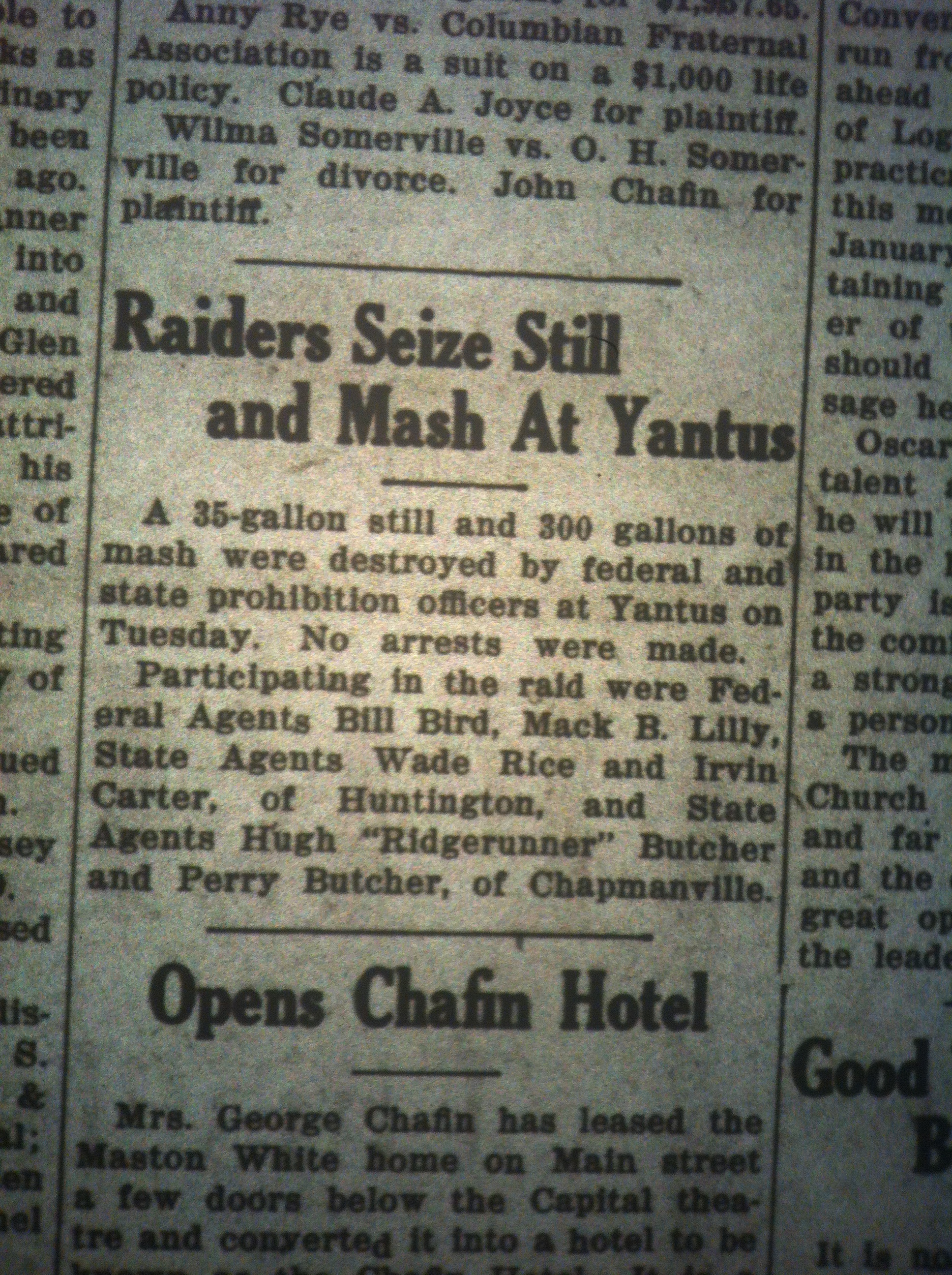
Logan (WV) Banner, 14 January 1927.
22 Wednesday Nov 2017
Posted in Big Harts Creek, Chapmanville, Crawley Creek, Shively, Spottswood
Tags
Appalachia, Bill Bird, Buck Fork, Chapmanville, Crawley Creek, crime, deputy sheriff, Ed Hensley, Harry Butcher, Harts Creek, Henderson Maynard, Henlawson, history, Hugh Butcher, Irwin Carter, Logan Banner, Logan County, moonshine, moonshining, Mud Fork, Smokehouse Fork, Wade Rice, West Virginia, White Oak Fork
From the Logan Banner of Logan, WV, comes this story about Harts Creek moonshiners dated February 1, 1927:
Raiders Find Three Stills Along Harts
Mash In Abundance is Located But Shiners Are Wary, Alert and Fleet.
Prohibition officers, federal and state, made sweeping raids along Harts Creek last Thursday. Two moonshine stills complete and part of another, together with 900 gallons of mash and 12 gallons of moonshine were seized and destroyed. Operators of the stills escaped the dragnet.
An 80-gallon copper still was found in operation by the raiding agents at the mouth of Buck Fork of Harts Creek, along with 400 gallons of mash and eleven gallons of moonshine. No one was at the still when the officers arrived, according to the latter, but later two men approached carrying sacks of half-gallon fruit jars. At sight of the officers, they turned and fled, escaping.
A 36-gallon capacity still, 300 gallons of mash, and a small quantity of liquor were found by the officers on Smoke House Fork of Harts Creek. Three men fled from the scene on approach of the agents and made good their getaway. Forty-two empty one-half gallon fruit jars were also found there and destroyed.
In the same locality the officers found the worm and other parts of another moonshine still, together with 200 gallons of mash.
Officers participating in the raids were: Federal Agents Lilly and Bill Bird and State Agents Hugh “Ridgerunner” Butcher and Harry Butcher, of Chapmanville, Irwin Carter, and Wade Rice.
These men believe they seized the still that made the liquor that was consumed by those present when ____________________ were shot to death.
***
From the Logan Banner of Logan, WV, comes this story about Crawley Creek and Harts Creek moonshiners dated April 8, 1927:
‘Shiner Totes Still and Makes Escape
An all-day raid Tuesday on Crawleys and the upper reaches of Harts Creek by five officers resulted in the capture of three stills and 22 barrels of mash.
Five shiners were seen at a distance working around a still but they were able to escape and take their still with them owing to their better knowledge of the country. A couple of shots were fired at the man who carried the still but he “carried on” with a stout heart and saved his “mint.” This was on White Oak of Harts.
This raiding party was made up of Prohibition Agent Ed Hensley, Deputy Sheriff Henderson Maynard and State Policeman Rowe, Wilson, and Russell. They went to the head of Mud Fork Tuesday morning and scouted along the ridges, reaching Henlawson late in the day where a car awaited them to bring them home.
The signal system along Crawleys and Harts works so effectively, it is said, that it is nearly impossible for the officers to catch a moonshiner at his still or get hold of any of his product, although stills and mash are often found. If the officers raid the country in daylight they are seen and warnings are sent out in various ways to all concerned. If they travel at night, they must use lanterns or flashlights which are of course detected and reported.
13 Friday Oct 2017
Posted in Chapmanville, Huntington
Tags
Appalachia, Cam Pridemore, Chapmanville, Democratic Party, deputy sheriff, G.S. Ferrell, H.T. Butcher, history, Hubert Toney, Huntington, John Webb, Logan Banner, Logan County, Martin Johnson, moonshine, moonshining, Peach Creek, Republican Party, Route 10, Squire Barker, Sutton, W.H. Phipps, West Virginia
An unknown correspondent from Chapmanville in Logan County, West Virginia, offered the following items, which the Logan Banner printed on July 2, 1926:
The grading of our road is not quite done, but the road is open to traffic to Huntington.
W.H. Phipps of Peach Creek was here Monday and Tuesday of this week.
Cam Pridemore is the best deputy sheriff we have had for years.
Squire Barker is kept busy hiving bees these hot days.
Ask John Webb what it costs to get a taxi here.
Martin Johnson has purchased the wholesale feed store of G.S. Ferrell. We like to see new capital come to town.
Hubert Toney and wife left his morning for Sutton to visit Mrs. Toney’s parents at that place.
The Democrats can’t see how there comes to be so many Republicans here this time.
H.T. Butcher is making the bootlegger’s life a hard one these days.
03 Tuesday Oct 2017
Posted in Crawley Creek
Tags
Appalachia, Crawley Creek, Guyandotte Valley, history, Logan Banner, Logan County, moonshine, moonshining, R.L. Hill, West Virginia

Logan (WV) Banner, 11 November 1921.
03 Sunday Sep 2017
Posted in Big Harts Creek, Logan, Queens Ridge, Whirlwind
Tags
Annie Dingess, Anthony Adams, Appalachia, Bob Dingess, Buck Creek, Burl Mullins, Carl Adams, Charles Curry, Charley Mullins, Daniel McCloud, Edward Hensley, Ewell Mullins, Frank Adams, genealogy, Harts Creek, Hoover Fork, Hoover School House, Isom Workman, Logan, Logan Banner, Logan County, Lora Belle Martin, Lucy B. Mullins, Lucy McCloud, moonshine, moonshining, Mud Fork, preacher, Queens Ridge, T.H. Adams, Twelve Pole Creek, Washington, West Virginia, Whirlwind, Wilburn Mullins
An unknown correspondent from Whirlwind in Logan County, West Virginia, offered the following items, which the Logan Banner printed on March 8, 1927:
Edward Hensley, the prohibitionist, and Frank Adams, the constable, are constantly on their duty trying to catch all the moonshiners at present.
Anthony Adams of Logan visited relatives at Whirlwind Sunday.
Mr. and Mrs. R.L. Dingess of Whirlwind spent Sunday with their parents at Queens Ridge.
A large crowd visited the Hoover school house Sunday expecting to hear a sermon delivered by Rev. Chas. Curry, but were badly disappointed as Curry was not present.
Daniel McCloud has postponed his singing school, as there are several pupils suffering with smallpox at the place where the school is being taught.
T.H. Adams went through town with a basket in his hand Sunday.
Burl Mullins of Buck Creek spent Sunday on Hoover with his sweetie.
Wilburn Mullins of Mud Fork is still visiting Hoover regularly.
Charley Mullins made a business trip to Twelve Pole Monday.
Mr. and Mrs. Ewell Mullins made a flying trip to Washington, D.C., last week. Guess they had a message for the President.
Carl Adams is still cold trailing. Carl says he is going to stop if the trail doesn’t get warmer.
Isom Workman was calling on Miss Lucy B. Mullins Sunday.
Miss Lucy B. McCloud of Hoover was visiting her aunt, Mrs. Lora B. Martin, of Queens Ridge Sunday.
13 Sunday Aug 2017
Posted in Big Harts Creek, Shively
Tags
Appalachia, Bob Bryant, Calvary Bryant, Con Chafin, crime, Cush Chambers, Floyd Bryant, genealogy, Harts Creek, Henderson Bryant, history, Logan, Logan Banner, Logan County, Marion Bryant, moonshine, moonshining, Nellie Bryant, prosecuting attorney, Robert Bland, West Virginia
In a story titled “111 True Bills Found By Grand Jury Which Submits Final Report” and printed in the Logan Banner of Logan, WV, on October 12, 1926, we find this item (excerpted here):
“Concluding a four-day session the grand jury made its final report and was discharged last night by Circuit Judge Robert Bland. There were 111 indictments returned, 66 for felonies and 45 for misdemeanors–a total somewhat larger than the average for Logan county grand juries. Names of those indicted are withheld from publication for the reason that some persons involved are not in custody. Capiases will be issued forthwith for those indicted and not in jail, while those in jail and all who are apprehended without delay will be arraigned very soon. Court attaches are of the opinion that none of these will be tried until next month as there was already a big criminal docket. However, considerable progress has been made so far. Having caught up with the calendar, court adjourned yesterday morning for the remainder of the day, after a short session.
“Victory has come to the Bryants, who live on Old House Branch of Harts Creek, and who were indicted for operating a still last December. The joint indictment embraced Hent Bryant and his sons Calvary, Bob, and Floyd. When the case was called on Tuesday the defendants elected to be tried separately, whereupon Prosecuting Attorney Con Chafin chose to try Calvary first. There was a large volume of testimony for each side. The case was submitted to the jury without argument at 9 o’clock Tuesday night and in a few minutes a verdict of acquittal was returned. C.C. Chambers represented the defense.
“The State’s evidence showed that an official raiding party found a spot about three-fourths of a mile from the Bryant home where a still had been in operation and where a quantity of mash had been poured out shortly before the arrival of the officers. The Bryant premises were then searched, but no still or whiskey was found. However, Marion Bryant, a cousin of Calvary, testified that Calvary had employed him to assist him in the operation of a still.
“From the Bryants there came positive denials of any interest in any still or of any knowledge of a still having ever been in operation at the spot in the woods where the officers thought that they had made a significant discovery. The defense attacked the credibility of Marion Bryant’s testimony, claiming that he was actuated by spite. It was testified by members of the family that Marion, after staying at Hent Bryant’s home for a while and doing odd jobs, had been requested to leave; that he made threats against the family at that time because Nellie Bryant, a daughter of Hent, spurned his love and his proposals of marriage.
“After the jury returned its verdict, the cases against the other Bryants were continued to the next regular term.”
18 Sunday Jun 2017
Posted in Hatfield-McCoy Feud, Logan
Tags
Appalachia, Cap Hatfield, Denny Smith, genealogy, Hatfield-McCoy Feud, history, Huntington, Ira P. Hager, Joe Adkins, Logan County, moonshine, moonshining, Stirrat, West Virginia
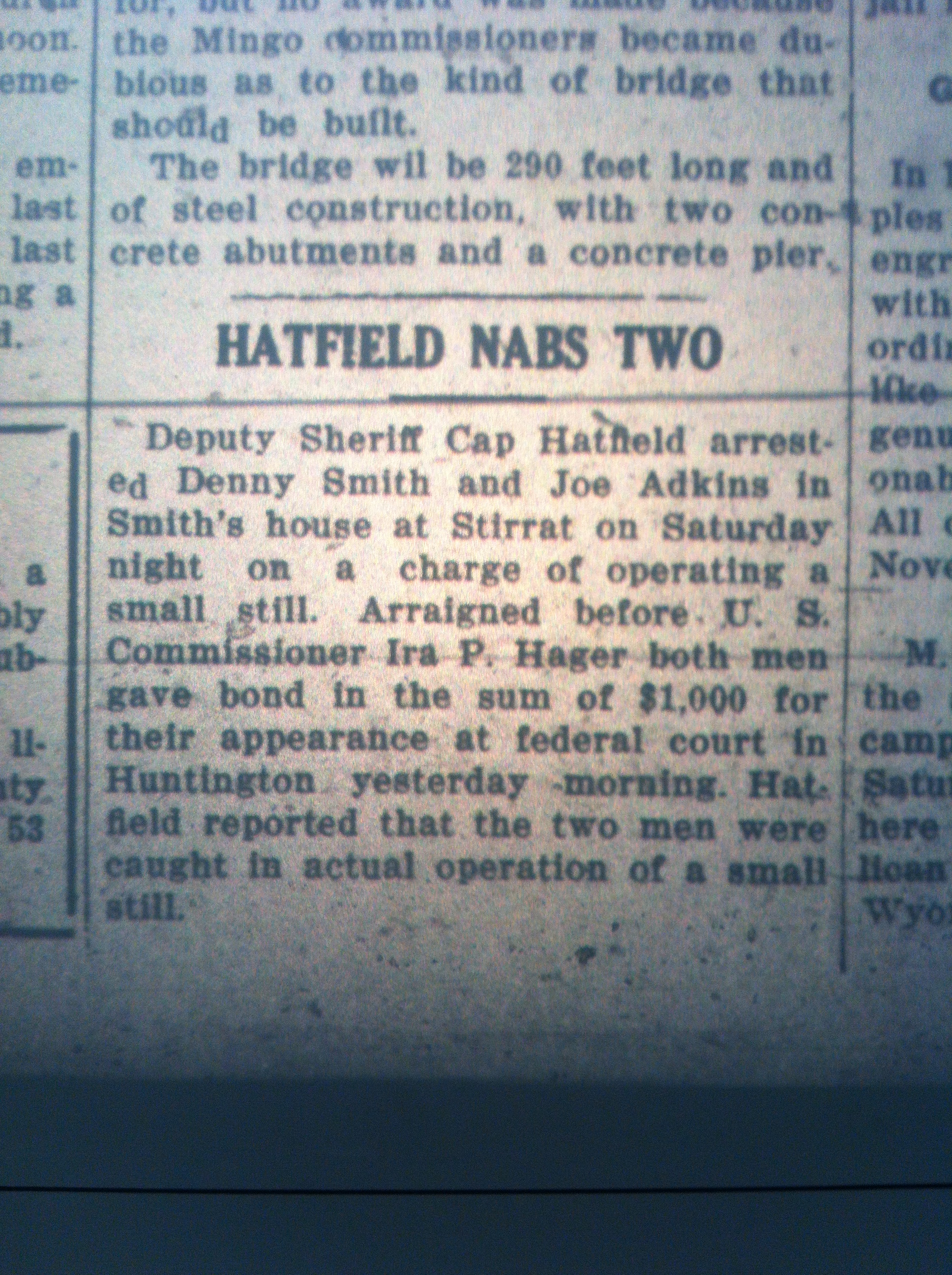
Logan (WV) Banner, 5 October 1926.
14 Wednesday Jun 2017
Posted in Big Harts Creek, Shively
Tags
Appalachia, crime, genealogy, Golden Butcher, Harts Creek, Henderson Dingess, Henderson Farris, history, John Butcher, John Shadd, Logan, Logan Banner, Logan County, Marshal Reynolds, moonshine, moonshining, West Virginia

Logan (WV) Banner, 30 July 1926.
29 Wednesday Mar 2017
Posted in Big Harts Creek
Tags
Appalachia, Harts Creek, history, Logan Banner, Logan County, moonshine, moonshining, West Virginia
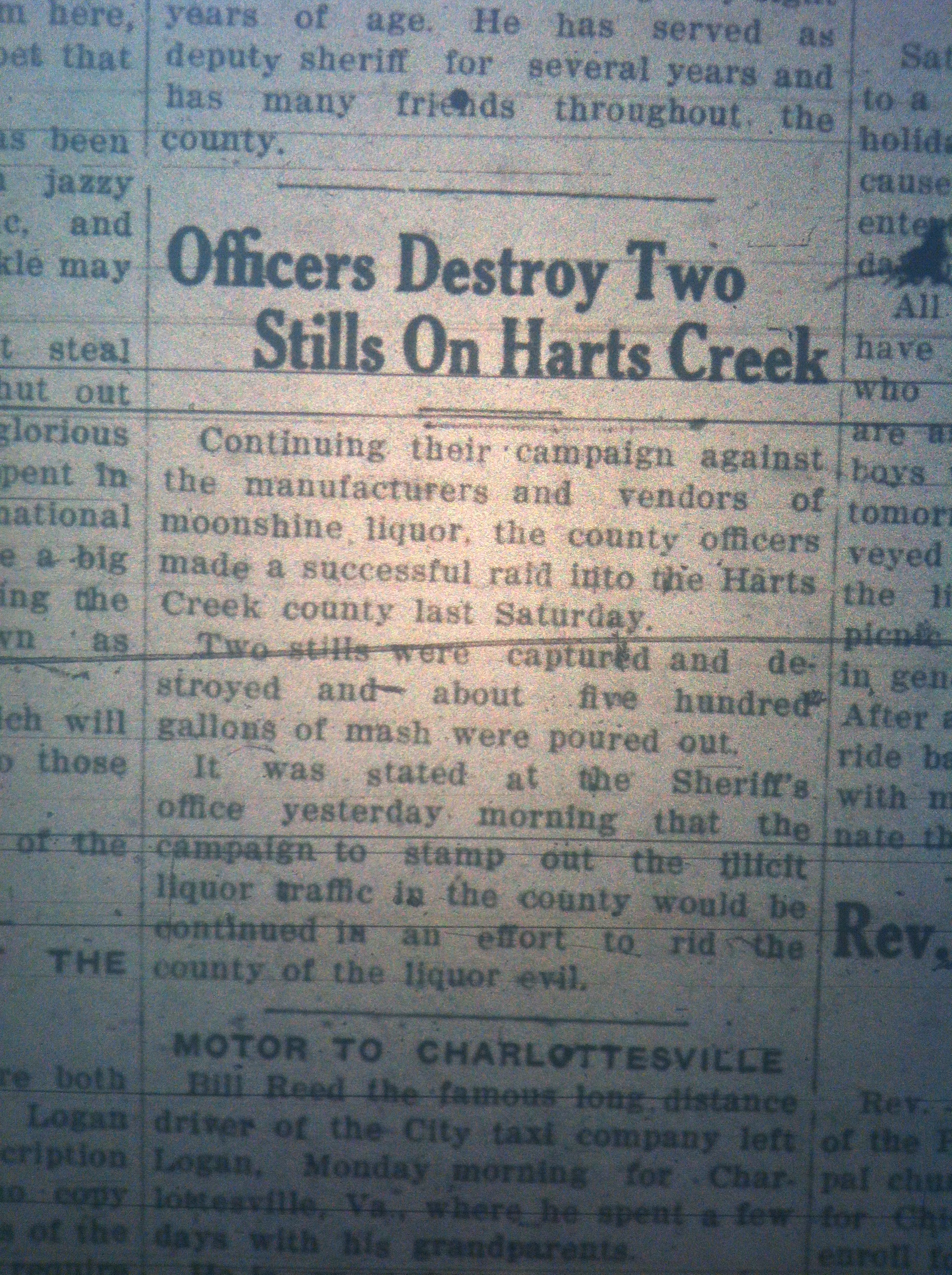
Logan Banner (Logan, WV), 19 June 1925.
28 Monday Mar 2016
Posted in Whirlwind
Tags
Appalachia, crime, Harts Creek, history, Logan Banner, Logan County, moonshine, moonshining, West Virginia

Harts Creek Stills, Logan (WV) Banner, 19 June 1925.
17 Sunday Aug 2014
Posted in Big Ugly Creek, Coal, Gill, Logan, Sand Creek
Tags
Andy Cyfers, Big Ugly Creek, Billy Sunday, C.M. Adkins, cancer, coal, Earn Cooper, Elmer Fry, farming, Ferguson Evans, Gill, Hager, Hal Cyfers, Hubball, J.E. Gore, Janie Thompson, Lincoln County, Lincoln Republican, Logan, Madison, measles, moonshining, Nancy Cyfers, Sand Creek, W.M. Sperry, Ward Spears, Wayne County, West Virginia, Will Cyfers
“Reporter,” a local correspondent from Gill in Lincoln County, West Virginia, offered the following items, which the Lincoln Republican printed on Thursday, June 14, 1923:
Miss Janie Thompson was the weekend guest of Mr. and Mrs. Wm. Sperry, and also assisted them while ill with the measles.
Earn Cooper, of Hager, was the guest of his sister, Mrs. W.M. Sperry, and also Mr. and Mrs. Ward Spears, the latter part of last week.
Elmer Fry has been hauling bank posts and ties the past week.
Hal Cyphers has been working at Omar the past week.
Quite a number of people from this section have been going to Logan to hear Billy Sunday preach.
W.M. Sperry and Andy Cyphers attended meeting at Sand Creek last Sunday.
J.E. Gore, Cancer Specialist of Madison, was here recently.
Ferguson Evans has moved to Hubball, where he will have employment in the mines.
The loafers, rats and moonshiners are not so thick around Gill at present as they have been.
Our Ticket Agent, C.M. Adkins, remains on the job at this place and knows business when he sees it.
Will Cyphers, of Wayne county, was the over Sunday guest of Mr. and Mrs. A. Cyphers. He reports the crops in Wayne good.
16 Saturday Aug 2014
Posted in Big Harts Creek, Culture of Honor, Ed Haley, John Hartford, Lincoln County Feud, Warren
Tags
Ben Adams, Bertha Mullins, Bill Thompson, Billie Brumfield, Brandon Kirk, Buck Fork, Cas Baisden, crime, Dingess, Dump Farley, Ed Haley, Ewell Mullins, Greasy George Adams, Green Shoal, Harts Creek, history, Imogene Haley, Jim Martin, John Frock Adams, John Hartford, Jonas Branch, Lincoln County Feud, Liza Mullins, Milt Haley, moonshining, Peter Mullins, Weddie Mullins, West Virginia, writing
Cas knew that Ed sold his homeplace at the mouth of Jonas Branch to Ewell Mullins. He said it originally stood below a big sugar tree in the bottom above Uncle Peter’s. (It was moved on logs.) It was a “little old two-room plank house” consisting of the “eating room,” which had a flat-rock chimney in the back with a fireplace and a “sleeping room.”
Cas best described the kitchen, which was just “out at the back” of the house.
“They wasn’t no floor in it,” he said. “It just sat on the ground. It was the length of the house — I guess maybe about eight feet wide — and they cooked out there in that. They cooked out there, packed it in, and set it on the table and they eat and everything in the same house. I’ve seen that old woman, Ewell’s wife, put fence rails in the stove — had a cook stove — and she’d stick them in there and set a chair on them till they burnt up to where they wouldn’t fall out. Me and her old man and his brother, we’d go up on that cliff and drag wood down that creek and the snow knee deep.”
Brandon asked Cas about the fate of Ewell’s house and he said they first enlarged it.
“We moved an old storehouse we had down the field there out there and put it beside of it,” he said. “It was there when the old man Ewell died ’cause the old storehouse had a crack up over the bed and his mother come in there and she was whining about that. Man, the snow’d blow in at him.”
Cas continued, “Then we turned around and tore that down and built this other to it. Tore that other’n down and built it back, too.”
He said the newer home was built on the same spot as the old one but it didn’t resemble it in any way.
Based on this testimony, we concluded that Ewell’s original home was truly gone.
Speaking of Uncle Peter, Brandon asked about him.
“Ah, he was a tomcat now, that old man was,” Cas said. “He was crippled in one foot and he walked on the back of it. Had his shoe made turned back. Prohibition men would come in and… I’ve seen him down there right below where Kate lived — he’d go out and hit that cliff. He’d get them bushes and swing up and go right up over them cliffs. He was bad to drink in his last few years. Well, they all the time made liquor and fooled with it. Finally got to drinking the stuff.”
Cas said Peter was bad to fight if provoked but Aunt Liza “was just like all other old women. She was a good old woman. She just stood and cooked.”
Cas thought that Ed’s mother was related to Uncle Peter, but wasn’t sure how.
“Wasn’t his dad named Milt Haley?” he asked.
Yeah.
“Well, you know they killed him down there around Green Shoal,” he said. “I heard somebody not too long ago a talking about them taking them over there and hanging them. I never did know too much about it. Nobody never talked too much about things back then.”
Cas had also heard about Ben Adams but didn’t know of his involvement in the 1889 troubles. He said Ben was a “pretty mean fellow” who lived in a log cabin still standing just up the creek.
“He had some kind of a brewery up here,” Cas said. “They had it built back in the bank. Sold booze there. Bootleg joint. I don’t know if all the old rocks and things is gone from there or not. He lived on Trace when he killed Jim Martin.”
Part of Ben’s old mill-dam was reportedly still visible in the creek at the Greasy George Adams place.
Cas told us again about Weddie Mullins’s death at Dingess, West Virginia. Weddie was an uncle to Ed Haley.
“I never did know too much about it,” he said. “We was little when that happened, I guess. Him and some of them Dingesses got into it and they shot and killed Weddie. And old man John Adams went down and looked at him, said, ‘What do you think about him?’ ‘Oh, I believe he’ll make it.’ Said he just hoisted that pistol, brother, and shot him right in the head and killed him. Said, ‘I know he won’t make it now.'”
This “old man John Adams” was Emma Haley’s half-brother, “John Frock.”
Cas said John could be ruthless.
“His wife was a coming out the gate and he shot her in the head and killed her,” he said. “Shot her whole head off. He was a little feller. He lived right there where Louie and them lived.”
Cas didn’t know what that killing was over.
“Back here at one time it was dangerous to even stick your head out of the door, son,” he said. “Why, everybody packed guns. Anybody’d kill you.”
The jockey grounds were rough places.
“A fella tried to run a horse over me up there at the mouth of Buck Fork and Billie Brumfield laid a pistol between his eyes and said, ‘You run that horse over him, you’ll never run it over nobody else.’ I believe it was before he killed his daddy.”
Cas said Dump Farley was at a jockey ground one time “right down under the hill from where Bill Thompson lived in that cornfield playing poker and he shot the corn all down. Talk about fellers a rolling behind the stumps and things.”
10 Thursday Jul 2014
Posted in Ferrellsburg, Hamlin, Logan, Timber
Tags
Albert Messer, Arena Ferrell, Buffalo Creek, Coon Tomblin, Dollie Toney, education, Ethel Davis, Ferrellsburg, Fisher B. Adkins, genealogy, Hamlin, history, Homer Hager, Huntington, Iva Adkins, Jake Mathes, Lincoln County, Lincoln Republican, Logan, Lucinda Adkins, moonshining, Musco Dingess, Nettie Bryant, Philip Hager, Roxie Adkins, Ruby Adkins, sawmill, West Virginia, World War I
“Observer,” a local correspondent from Ferrellsburg in Lincoln County, West Virginia, offered the following items, which the Lincoln Republican printed on Thursday, February 14, 1918:
The infant child of Henry Bryant died suddenly Monday.
Miss Ruby Adkins gave a Birthday dinner Saturday. Those present were: Miss Dollie Toney and her school enmasse, Mrs. Arena Ferrell, Miss Ethel Daves, Miss Roxie Adkins, Miss Nettie Bryant, Messrs. Homer Hager, and Musco Dingess. The school children being trained by their teacher, who is especially fitted for training little ones, rendered a very interesting and entertaining program.
Miss Iva Adkins has been real sick this week.
It is reported that “Coon” Tomblin, President of the Local Bootleggers Union has been arrested and placed in jail at Logan. This is quite a shock to the members of the Union, being the first time they have been interrupted for two years.
Supt. F.B. Adkins returned from Hamlin Saturday and is husking corn.
Aunt Sinda Adkins has been seriously ill the past week.
Albert Messer and family, of Buffalo, are visiting relatives at this place.
Jake Mathes, of Huntington, who is sawing for Philip Hager, returned Monday and is making the mill hum.
Quite a lot of the boys are preparing to leave for the training camp the 27th.
Writings from my travels and experiences. High and fine literature is wine, and mine is only water; but everybody likes water. Mark Twain
This site is dedicated to the collection, preservation, and promotion of history and culture in Appalachia.
Genealogy and History in North Carolina and Beyond
A site about one of the most beautiful, interesting, tallented, outrageous and colorful personalities of the 20th Century